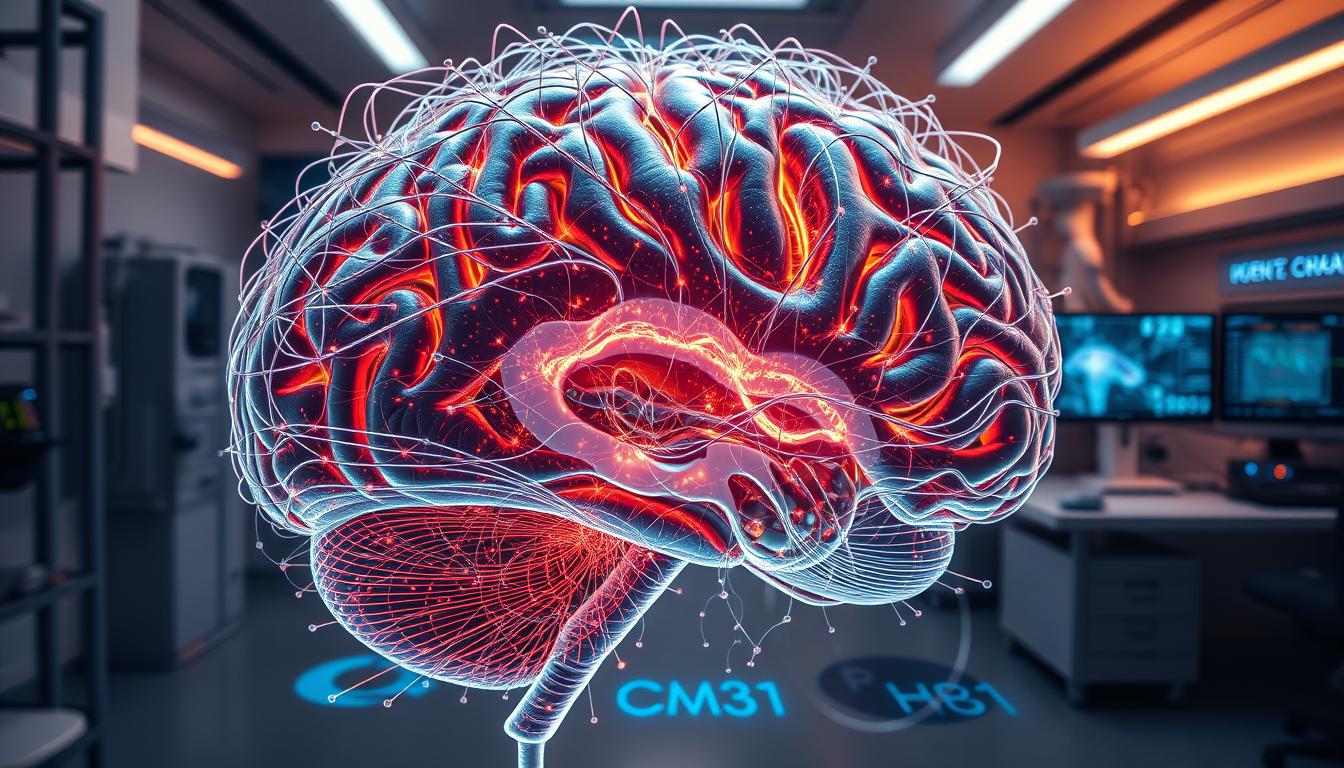In 1924, the first electroencephalography (EEG) device was introduced, marking the beginning of brain signal detection. Fast forward to today, and the technology has evolved into advanced non-invasive systems that can read brain signals with remarkable accuracy1. These systems, known as brain-computer interfaces (BCIs), have transformed neurological care and technology.
BCIs enable individuals with paralysis or amputations to control prosthetic limbs or computer cursors solely through thought1. This technology holds the potential to restore speed for those who have lost it and provide new treatments for conditions such as depression, PTSD, and brain injuries1.
Recent advancements in artificial intelligence and machine learning are expected to enhance the accuracy and usability of non-invasive BCIs1. For instance, Neuralink received FDA approval in May 2023 for clinical trials of its BCI technology, indicating significant progress in the field2.
Despite these advancements, challenges remain. The accuracy and reliability of non-invasive BCIs need improvement for practical everyday use1. Additionally, invasive BCIs, while more precise, raise significant ethical and safety concerns due to the risks associated with brain surgery1.
Key Takeaways
- BCIs have evolved from early EEG devices to advanced non-invasive systems.
- They enable control of prosthetic limbs and computer cursors through thought.
- BCIs hold potential for treating depression, PTSD, and brain injuries.
- Advances in AI and machine learning are enhancing BCI accuracy and usability.
- Invasive BCIs raise significant ethical and safety concerns.
Understanding Brain-Computer Interfaces
Brain-computer interfaces (BCIs) are revolutionizing how we interact with technology by decoding neural signals. These systems convert brain activity into actionable commands for external devices, offering life-changing solutions for individuals with severe impairments3.
Defining BCIs and Their Purpose
BCIs are designed to interpret brain signals and translate them into actions. For example, they enable paralyzed patients to control prosthetics or wheelchairs using their thoughts3. This technology is not just about control; it’s about restoring independence and improving quality of life.
Beyond physical control, BCIs also facilitate communication for those with conditions like locked-in syndrome or ALS. By translating brain signals into text or speech, they provide a voice to those who have lost it4.
Key Technologies and Signals Involved
Electroencephalography (EEG) is a cornerstone of BCI technology. It captures electrical activity in the brain, which is then processed into commands3. Advanced signal processing methods and machine learning algorithms enhance the accuracy and speed of this translation3.
However, extracting usable signals from the brain remains a significant challenge. Calibration is critical to ensure the system responds accurately to the user’s intentions3. Both invasive and non-invasive BCIs are being employed, each with its own advantages and limitations.
Invasive BCIs, like implanted electrodes, offer high precision but come with surgical risks. Non-invasive options, such as EEG headsets, are safer and more accessible but may lack the same level of accuracy3.
As research progresses, technologies like functional near-infrared spectroscopy (fNIRS) aim to bridge this gap, offering precision without the need for surgery3.
Historical Evolution and Scientific Foundations
Luigi Galvani’s experiments in the 18th century laid the foundation for today’s advanced brain-computer systems. His work on animal electricity revealed the connection between electrical signals and muscle movement, sparking centuries of research into neural activity1.
In the 1920s, Hans Berger’s pioneering EEG recordings marked a turning point. His ability to capture brain waves opened the door to understanding how the brain communicates2. This discovery set the stage for modern brain-computer interfaces.

From Early Electroencephalography to Modern BCIs
The 1960s saw accelerated research into brain waves, with early experiments involving monkeys2. These studies demonstrated the potential for translating neural signals into actions, laying the groundwork for future advancements.
In 1973, Jacques Vidal coined the term “brain-computer interface,” introducing foundational concepts for the field2. His work highlighted the possibility of using brain signals to control external devices, a vision that has since become reality.
Pioneering Discoveries and Experiments
By the 1990s, researchers developed systems allowing individuals to move computer cursors using only their thoughts2. This breakthrough showcased the advancement of BCIs in restoring motor functions for patients with severe impairments.
In 1999, experiments with rats demonstrated the ability to control robotic arms using brain-derived signals2. These milestones underscored the growing reliability and precision of BCI technology.
| Year | Milestone | Significance |
|---|---|---|
| 18th Century | Luigi Galvani’s animal electricity experiments | Revealed the link between electrical signals and muscle movement |
| 1929 | Hans Berger’s EEG recordings | First capture of brain waves |
| 1973 | Jacques Vidal coins “brain-computer interface” | Introduced foundational concepts for BCIs |
| 1990s | Thought-controlled computer cursors | Demonstrated the potential for motor function restoration |
| 1999 | Rat-controlled robotic arm | Highlighted precision in brain-derived signal control |
Today, BCIs continue to evolve, offering hope for patients with paralysis, amputations, and neurological disorders. The journey from Galvani’s experiments to modern systems underscores the transformative power of research and innovation1.
Bridging Mind & Machine: How Brain-Computer Interfaces Are Redefining Neurology
The fusion of neuroscience and technology has unlocked groundbreaking possibilities for individuals with neurological disorders. By interpreting brain signals, these systems are transforming lives and reshaping neurological care1.

Neurological Breakthroughs and Patient Empowerment
BCIs are revolutionizing neurology by empowering individuals suffering from severe impairments. For example, Neuralink’s live demonstration with Noland Arbaugh showcased how a paralyzed individual could control a computer cursor using only their thoughts2.
This technology is not just about control; it’s about restoring independence and improving quality of life. Patients with conditions like ALS or locked-in syndrome can now communicate through brain-derived signals, offering a new lease on life1.
“This technology has given me back a piece of my independence,” said Noland Arbaugh during Neuralink’s demonstration.
Innovative Communication and Interaction Methods
BCIs are enabling unprecedented interaction between patients and external devices. By decoding brain signals, these systems allow users to control prosthetics, wheelchairs, and even computers1.
One of the most significant breakthroughs is in communication. Patients who were once unable to speak can now express themselves through text or speech generated by their brain activity1.
These advancements are not just technological; they are deeply human. They represent a blend of scientific discovery and innovation that is changing lives every day.
| Breakthrough | Impact |
|---|---|
| Thought-controlled prosthetics | Restores mobility for amputees |
| Brain-to-text communication | Enables speech for patients with ALS |
| Neuralink’s wireless chip | Improves user experience and functionality |
As BCIs continue to evolve, they hold the promise of even greater breakthroughs. From treating neurological disorders to enhancing everyday life, the possibilities are endless1.
Advancements in BCI Technology and Applications
The rapid evolution of brain-computer interface (BCI) technology has opened new doors in both medical and technological fields. From non-invasive systems to invasive implants, these advancements are reshaping how we approach neurological care and rehabilitation5.
Non-Invasive Versus Invasive Systems
Non-invasive BCIs, like EEG headsets, are widely used due to their safety and accessibility. They capture brain signals without surgery, making them ideal for research and everyday use5. However, they often face challenges in accuracy and signal clarity.
Invasive systems, such as Neuralink’s brain implant, offer higher precision by directly interfacing with neural tissue. In 2021, Neuralink demonstrated a monkey playing video games using its implant, showcasing the potential for precise control5. Yet, these systems raise concerns about surgical risks and long-term safety.
Applications in Rehabilitation and Prosthetics
BCIs are revolutionizing rehabilitation by restoring movement and communication for patients with severe impairments. For example, in 2005, Matt Nagle became the first person to control an artificial hand using a BCI5. This breakthrough highlighted the potential for restoring autonomy to individuals with paralysis.
In 2021, a Stanford University study enabled a quadriplegic participant to produce English sentences at 18 words per minute using a BCI5. Such advancements are transforming the field of rehabilitation, offering hope to those with limited mobility or speech.
Real-World Case Studies and Success Stories
Real-world applications of BCIs continue to demonstrate their life-changing potential. Neuralink’s first human implant allowed a patient to control a computer mouse through thought alone, marking a significant milestone in the field6.
Another success story involves a BCI system that enabled rhesus monkeys to control an avatar arm while receiving sensory feedback5. These case studies underscore the growing reliability and precision of BCI technologies.
As BCIs advance, privacy and user autonomy remain critical considerations. Ensuring data security and ethical use is essential for widespread adoption5. The science behind these systems continues to drive innovation, offering new possibilities for patients and researchers alike.
Ethical, Safety, and Regulatory Considerations
As brain-computer interface technology advances, ethical and safety concerns have become a central focus in its development. The ability to monitor and interpret brain data raises complex questions about privacy, consent, and data security1. These challenges must be addressed to ensure the responsible use of this transformative technology.
Privacy, Consent, and Data Security Issues
One of the most pressing ethical considerations is the protection of brain data. BCIs collect sensitive information, which could be misused if not properly secured1. Ensuring user consent and transparency in data collection is critical to maintaining trust.
Companies like Neuralink have faced scrutiny for their handling of sensitive information. Reports suggest that employees felt pressured to compromise safety to expedite FDA approval2. This highlights the need for robust protocols to safeguard user privacy and data integrity.
Balancing Innovation with Patient Safety
The rapid development of BCI systems necessitates a careful balance between technological innovation and patient safety. Invasive BCIs, while offering greater precision, come with significant risks, including complications from brain surgery1.
Regulatory oversight is essential to mitigate these risks. For example, Neuralink’s approval for clinical trials in May 2023 was a milestone, but it also raised questions about the long-term safety of its technology2. Ongoing debate among experts emphasizes the importance of rigorous testing and ethical standards.
| Challenge | Solution |
|---|---|
| Privacy Concerns | Implement robust data encryption and user consent protocols |
| Safety Risks | Conduct thorough clinical trials and regulatory reviews |
| Ethical Misuse | Establish clear guidelines for data usage and application |
As BCIs continue to evolve, addressing these ethical and safety concerns will be crucial. By prioritizing user protection and regulatory compliance, the field can achieve its full potential while minimizing risks1.
Future Perspectives and Research Directions
The future of brain-computer interface technology is poised for transformative advancements, driven by artificial intelligence and expanded neurological applications. As research progresses, the integration of AI promises to enhance functionality and broaden the horizons of neurological care7.
Integrating Artificial Intelligence for Enhanced Functionality
Artificial intelligence is revolutionizing how brain signals are interpreted and translated into commands. By leveraging machine learning algorithms, BCIs can achieve greater accuracy and speed in processing neural data7. This advancement is critical for improving the usability of external devices controlled by thought.
One of the key challenges is ensuring that AI-driven BCIs can adapt to individual users. Personalized calibration is essential for achieving reliable performance, especially in clinical settings8. As AI continues to evolve, it will play a pivotal role in overcoming these hurdles.
Expanding the Horizons of Neurological Research
Neurotechnology is opening new doors for understanding and treating neurological conditions. Researchers are exploring how BCIs can aid in recovery from injuries such as stroke or spinal cord damage7. These applications highlight the potential for BCIs to restore lost functions and improve quality of life.
In addition to medical applications, BCIs are being integrated into everyday technology. From smart home systems to virtual reality, the possibilities are vast9. This expansion underscores the growing impact of neurotechnology on various aspects of life.
| Research Focus | Potential Impact |
|---|---|
| AI Integration | Enhances signal processing and command accuracy |
| Clinical Applications | Supports recovery from neurological injuries |
| Everyday Technology | Enables seamless interaction with external devices |
As BCIs advance, ethical considerations such as user consent and data security remain critical. Ensuring these technologies are deployed safely and responsibly will be key to their success7. The future of BCIs is bright, with research and innovation paving the way for groundbreaking advancements.
Conclusion
From early scientific experiments to modern innovations, the journey of brain-computer interfaces has been transformative. These systems have evolved from rudimentary designs to advanced technologies capable of reading brain signals with remarkable accuracy1. Key milestones, such as the development of EEG and Neuralink’s FDA-approved trials, highlight the rapid progress in this field2.
These advancements are reshaping neurological care, offering hope to patients with paralysis, amputations, and other severe impairments. By enabling thought-controlled prosthetics and communication devices, they restore independence and improve quality of life1. However, ethical considerations, such as privacy and data security, remain critical to ensure responsible development1.
Looking ahead, the integration of artificial intelligence promises to enhance functionality, making these systems more intuitive and accessible1. As research continues, the future environment of neurotechnology will be shaped by innovation, ethical standards, and a commitment to improving patient outcomes. This technology holds profound implications for society, paving the way for a new era of human-machine interaction.
FAQ
What is a brain-computer interface (BCI)?
How do brain-computer interfaces work?
What are the main applications of BCIs?
Are BCIs invasive or non-invasive?
What are the ethical concerns surrounding BCIs?
How is artificial intelligence integrated into BCIs?
What is the future of BCI technology?
Can BCIs improve communication for individuals with disabilities?
Source Links
- The Future of Brain-Computer Interfaces: What’s Next – https://neurologymobile.com/the-future-of-brain-computer-interfaces/
- How BCI Technology Connects Brains with Computers – https://www.medicaltechnologyschools.com/biotechnology/brain-computer-interface-technology
- Brain-Computer Interfaces: Bridging Minds and Machines – https://www.aidoos.com/blog/Brain-Computer-Interfaces-Bridging-Minds-and-Machines/?srsltid=AfmBOopBKKOL3OYyYSX_sRvKXxeSlL0PM-pmvNb597WFRe_fq9szP9Vz
- Brain-Computer Interfaces Bridging Minds and Machines – TechWinger – https://techwinger.com/brain-computer-interfaces-bridging-minds
- Brain–computer interface – https://en.wikipedia.org/wiki/Brain–computer_interface
- Bridging Minds and Machines: Neuralink’s Pioneering Leap into Brain-Computer Interfaces – https://kenthospitals.com/technology/bridging-minds-and-machines-neuralinks-pioneering-leap-into-brain-computer-interfaces/
- Brain–Machine Interfaces as Commodities: Exchanging Mind for Matter – https://pmc.ncbi.nlm.nih.gov/articles/PMC7551542/
- Neural interfaces: Bridging the brain to the world beyond healthcare – https://pmc.ncbi.nlm.nih.gov/articles/PMC11491314/
- Impact of Virtual Reality on Brain–Computer Interface Performance in IoT Control—Review of Current State of Knowledge – https://www.mdpi.com/2076-3417/14/22/10541




